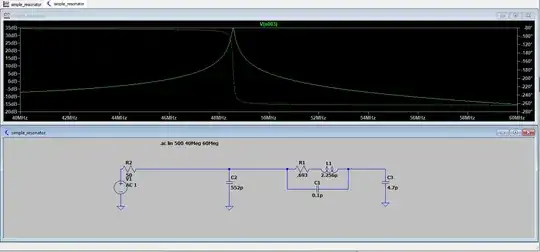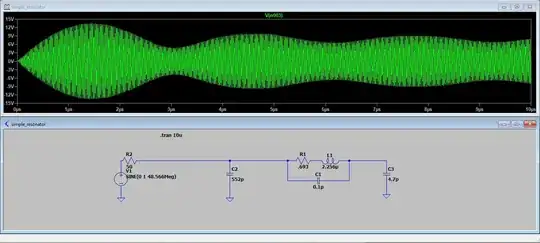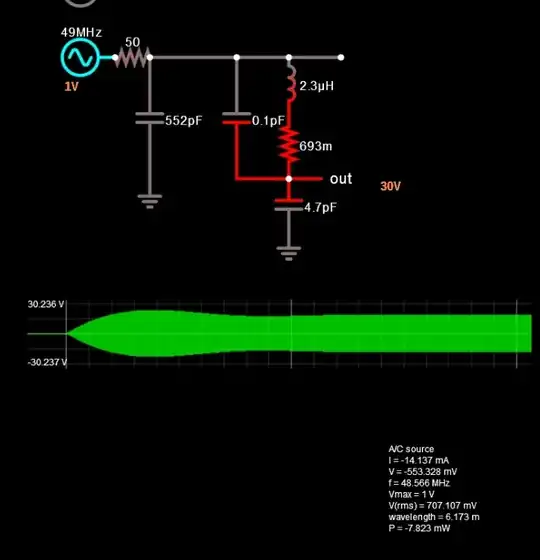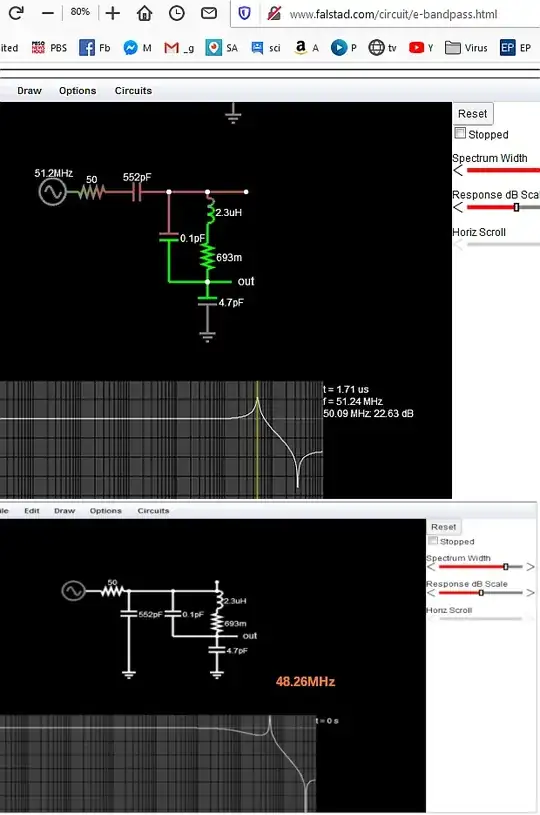I am modeling a simple impedance-matched RLC series resonator. I get a nice resonance at around ~48.5MHz when I do an ac analysis. However, when I try to do the corresponding transient analysis at the resonant frequency, I don't see the ~35bB voltage gain. All waveforms are across the 4.7pF capacitor.
In fact, I don't really understand what I'm seeing in the transient analysis at all. Can you spot anything wrong?



